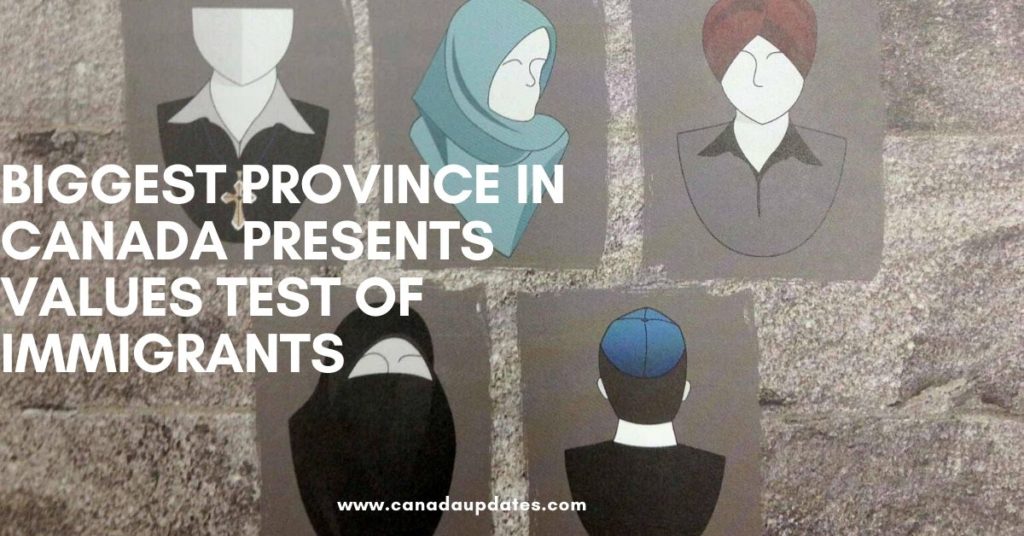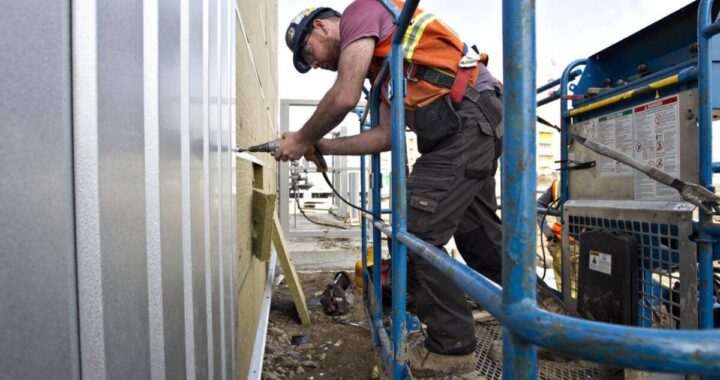Biggest Province in Canada Presents Values Test of Immigrants

Quebec has a special immigration arrangement and has specific powers for immigrants' selection, in particular for the economic category, with the federal government of Canada.
The provincial government is introducing a “value test” for economic immigrants wanting to settle in Canada’s predominantly French-speaking province, Quebec.
The government of François Legault released in a final vote last Sunday night an interdiction for all civil servants wearing religious symbols, enshrining a law deemed an affront to personal freedom by opposition parties, ethnic groups and human rights monitors.
The study was carried out by the Quebec Future Coalition (CAQ) government of Prime Minister François Legault. CAQ, the centre-right nationalist party, won the province’s two founding parties by the 2018 provincial election.
CAQ has been floating the idea to cut immigration to the mostly French-speaking province. To preserve Québec’s distinctive image, the federal government has a certain leeway in determining its rates of immigration. In an international context, the government of Legault has been burned to ban public employees in offices with religious symbols, such as Muslim hijabs and Jewish kiphas.

The Claim of the Law
The bill contains notwithstanding the provisions of the Charter of Rights and Freedoms of Canada on avoiding religious freedom challenges. It amends the Charter of Rights of Quebec, which restricts religious rights. It marks the first alteration of the national parliament without a majority on the constitution of the landmark rights of 1975.
The Prime Minister’s View
Civil rights advocates are challenging this ban in court, and during the recent federal political campaign, Canadian Prime Minister Justin Trudeau said he would make it a constitutional threat. He is worried that the defence of the rights of minorities does not seem to be the subject highlighted in the exam.

Statement of Religious Groups
Religious groups and attorneys say they’re going to try to overturn the law. Muslim women are impacted the most by the statute, and given this provision, gender discrimination cases can not be covered.
School boards in Montreal and several community officials said they were not going to enforce the rule. The Bishop’s University School of Education became the newest organisation that opposed the law on weekends.
It descended this as a “dangerous precedent, creating an atmosphere of mistrust, fear and animosity that makes the teaching profession unsafe and that schools less secure.
Several members of the opposition called Quebec a dark day on Sunday. Mr Legault has said that he puts a divided debate to rest and he acts on people’s will. His law is common, particularly with the French-speaking majority in the province.

Purpose of the Value Test
“The ideals and culture you want us to encounter are important to me,” said Francois Legault, premier of Québec.
These include the promotion of equality, gender diversity and a new law on secularism, which forbids such officials from wearing religious symbols such as veils or turbans.
The target is ‘better integration’, says Simon Jolin-Barrette, Quebec’s immigration minister, who announced that arrivals would be increased to a maximum of 44,500 in 2020 from 40,000 this year.
Rule of the Value Test
Quebec has the unique option to choose which Canadian immigrants it wants to accept and give them a certificate of selection-the first step towards permanent residence.
Applicants are expected to answer correctly 15 of 20 questions in the study, beginning 1 January but which does not apply to refugees.
Overview of the Quebec Province
Quebec has 15.4 per cent of its total territory and is the largest province in the world. It has an area of 5236,82 km2, and a surface area of 71,787,2 km2 and a population totalling 59542,88 km2.
The displaced and those who go into the area through family reunification schemes, because they are under governmental control, are exempt from the study.
Characteristics of the Value Test
The test consists of 20 Multiple Choice Questions addressing “democratic principles and the ideals of Québec in the Charter of Human Rights and Liberties, Quebec.
The applicant must obtain 75% marks to pass. The exam should take 90 minutes without supervision, and candidates can also make it from home remotely.

 Recent Changes to Canada’s Work Permit Rules and its impact on Immigrants from India
Recent Changes to Canada’s Work Permit Rules and its impact on Immigrants from India  Applications for UK Immigration witness major decline as the Immigration Laws undergo significant changes
Applications for UK Immigration witness major decline as the Immigration Laws undergo significant changes  Recent Changes to Canada’s Temporary Foreign Worker Program (TFWP) Effective May 1, 2024
Recent Changes to Canada’s Temporary Foreign Worker Program (TFWP) Effective May 1, 2024  Immigration Process to Latvia and Job Prospects
Immigration Process to Latvia and Job Prospects  Notario Fraud- a rampant fraudulent practice trapping immigrants to US and Canada
Notario Fraud- a rampant fraudulent practice trapping immigrants to US and Canada  Canada Immigrant Investor Program 2024- loaded with many good features- Check out here
Canada Immigrant Investor Program 2024- loaded with many good features- Check out here  What actions by Trump Government are in store for illegal immigrants in US? What are Challenges to deport illegal immigrants from US?
What actions by Trump Government are in store for illegal immigrants in US? What are Challenges to deport illegal immigrants from US?  What are changes in Canada Start up Visa Program and Self-Employed Persons Program. How would it affect the potential immigrants to Canada?
What are changes in Canada Start up Visa Program and Self-Employed Persons Program. How would it affect the potential immigrants to Canada?